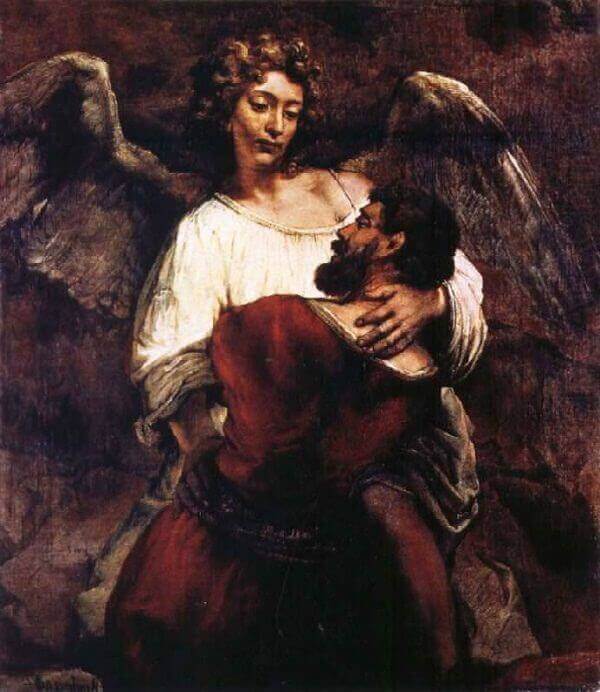Jacob Wrestling with the Angel, 1659 by Rembrandt

Relieved - involuntarily - of the weighty substance of the world, Rembrandt transferred it to his canvases, working the paint layers to create a micro-universe of unprecedented richness and complexity. Instead of the act
of painting disappearing into the subject matter, or echoing the subject matter, Rembrandt went so far, in the most radical pictures of his last decade, as to make paint itself the subject. Cut free from the obligation
to describe form literally (as all his contemporaries insisted it should), Rembrandt's paint-handling went off to lead a life of its own; an amazing vagabond life of daubing, dragging, twisting, dabbing, drizzling,
coating, sloshing, kneading, scraping, building into monumental constructions of pigment that had the mass and worked density of sculpture, yet which shone with emotive illumination. The great masterpieces of the 1660s
managed, at one and the same time, to be physically weighty but spiritually weightless; solid and earthbound, but leavened by the redeeming light of grace.
This is how he paints Jacob Wrestling with the Angel, less a struggle than an embrace. The action, which in the 1630s would have been a furious whirl of muscular energy, is quiet and slumberous, heavy with the
kind of eerie deceleration experienced in dreams. Though the Bible says only that Jacob wrestled "until the breaking of the day", Rembrandt has given it the quality of a somnambulist encounter, intensely felt yet
physically immaterial.The angel, to whom Rembrandt has given the most beautiful face in all of his painting (perhaps an idealized version of Titus), framed by a crown of thick, springy curls, one of which corkscrews down
his neck, looks tenderly from beneath shiny eyelids at Jacob's shut eyes and clasps him about the neck and waist with a lover's urgency. Damage is being done, all the same. The angels's right foot is braced against a rock,
and the strain of Jacob's body against him is written in the tensed muscles of his upper back and shoulders bulging through the crimson garment.




















